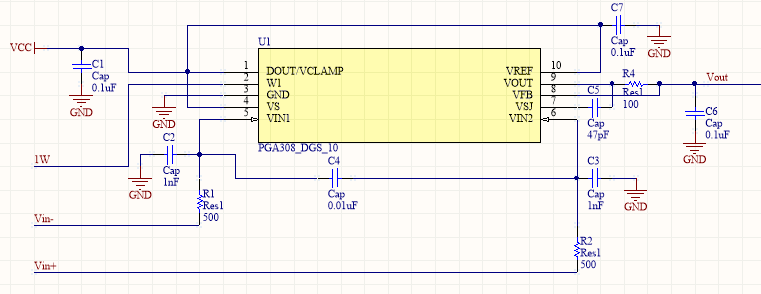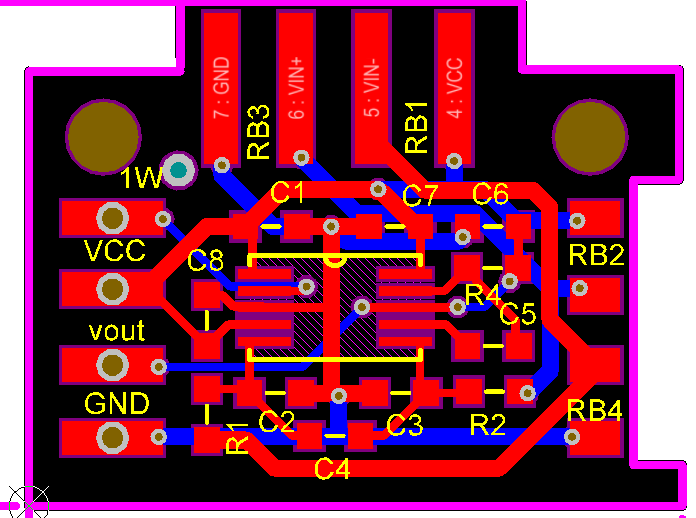Hi team,
The circuit
designed by the customer according to the EVM board is shown in the figure below. The pin4 pin (vs pin) of PGA308 chip supplies 5V power. Connect the ammeter in series and test the working current of the chip. It is found that about 50mA, the chip can work normally. In datasheet, there is no parameter of working current, only the parameter of quiescent current IQ is 1.3mA. Is the working current of the chip 50mA normal?
Best Regards,
Amy Luo



